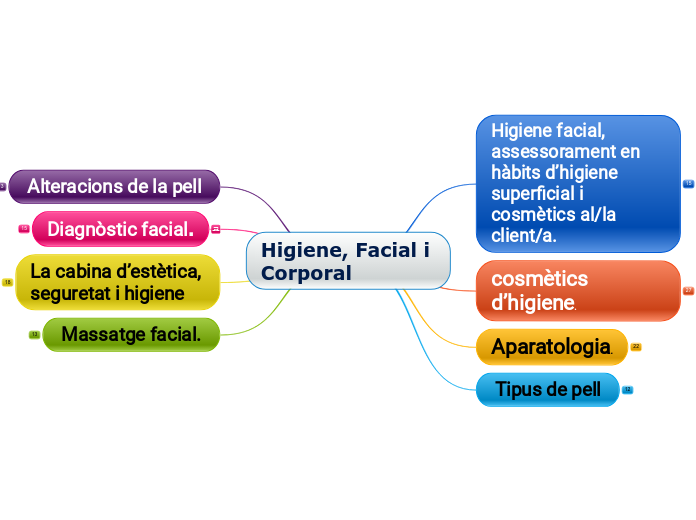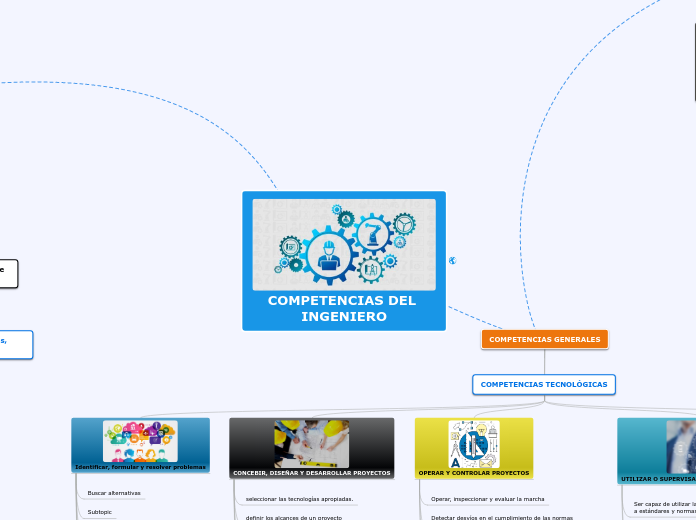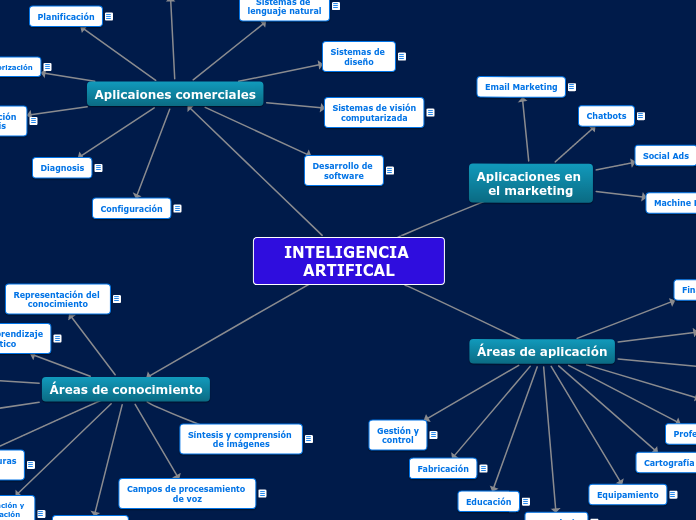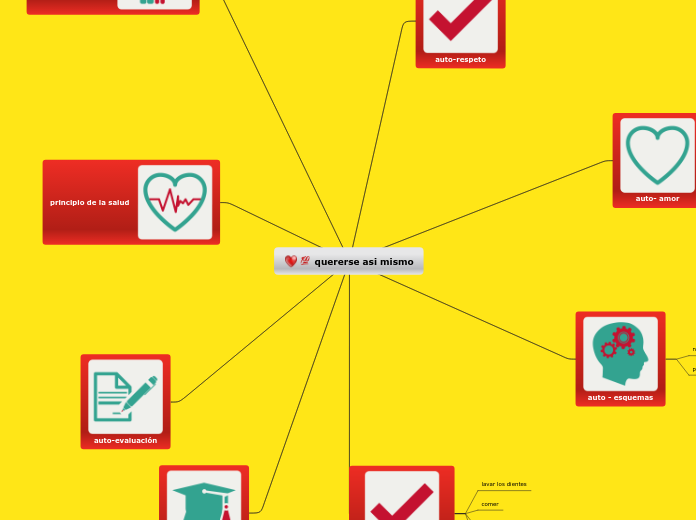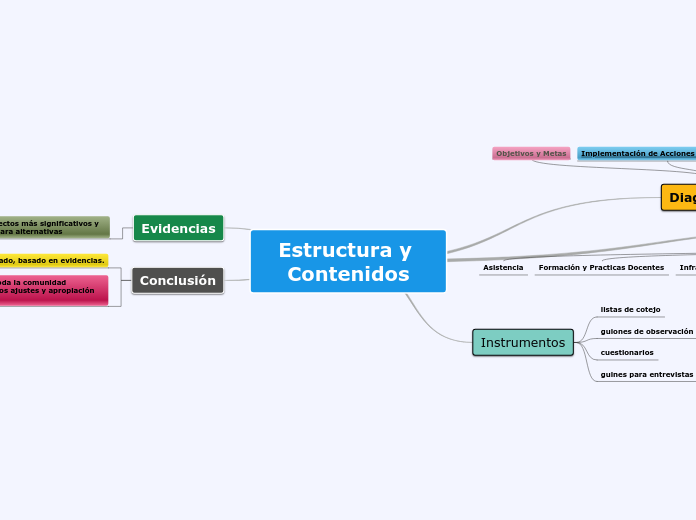Higiene, Facial i Corporal
The part of speech is a category to which a word is assigned according to its syntactic functions. In English the main parts of speech are noun, pronoun, adjective, determiner, verb, adverb, preposition, conjunction, and interjection.
Massatge facial.
A conjunction is a word like 'if' 'but' or 'and' which is used to connect sentences or clauses together.
Maniobres
Vibració
Amassament
Percussió
Pessic
Pressió
Fricció
Fregament
Contraindicació
Subordinating conjunctions are conjunctions that are used at the beginning of subordinate clauses. Some examples of these conjunctions are: although, after, before, because, how, if, once, since, so that, until, unless, when etc.
En el
cas de congestions circulatòries, inflamació dels nòdulslimfàtics, ferides, infeccions,
febre.... El temps del massatge serà de 15 a 20 minuts.
Posseeix diferents efectes a la pell, d'una banda augmenta el reg sanguini, la temperatura i millora la penetració de substàncies. També augmenta l'aportació de nutrients i oxigen als teixits de les cèl·lules, augmenten les secrecions
sebàcies i sudorípares, i tonifica i estimula els teixits.
Coordinating conjunctions always connect phrases, words, and clauses. They are: for, and, nor, but, or, yet, so.
This stew is savory and delicious.
La cabina d’estètica, seguretat i higiene
A numeral is a word or phrase that describes a numerical quantity.
Some theories of grammar use the word 'numeral' to refer to cardinal numbers that act as a determiner to specify the quantity of a noun, for example the 'two' in 'two hats'.
NETEJA I DESINFECCIÓ D’ESTRIS I UTENSILIS
NETEJA I DESINGECCIÓ DE LA LLENCERIA
BATES
FUNDES DE LLITERA
TOVALLOLES
DESINFECCIÓ I ESTERILITZACIÓ
No tallants
Tallants o molt fràgils
NETEJA I DESINFECCIÓ DEL LOCAL
CORTINES I LÀMPADES
PORTES, VIDRES
FINESTRES,PARETS
TERRA
EQUIPS DE DESINFECCIÓ I ESTERILITZACIÓ
AUTOCLAU
CALEFACTOR DE PERLINES DE QUARS
GENERADOR DE RADIACIONS ULTRAVIOLETES C- GERMICIDA
FORN DE PASTEUR
Diagnòstic facial.
El frec o lliscament suau amb el rovell dels dits
Pressió o palpació.
Pinçament.
Tècnica del raspat.
Tacte i palpació
Observació visual
Tipologia cutània
Alteracions de la pigmentació
Alteracions de la secreció sebàcia
Alteracions vasculars
Alteracions de la hidratació
Alteracions del to
Alteracions relacionades amb l’envelliment cutània
Alteracions de la superfície
El professional de l’estètica analitza el tipus i l’estat de la pell conjuntament amb la demanda
del client per a seleccionar les tècniques estètiques facials més idònies.
Alteracions de la pell
Màcula
Vesícules i ampolles
Barbs
Quits
Tubèrculs i nòduls
Fissures
Úlceres
Cicatrius
Escames
Pàpules
Pústules
Berrugues
Tumors cutanis
Tipus de pell
Hi ha 3 grups de pell:
- Seca
- Normal
- Grassa
Pell mixta.
Pell ocluida o asfíctica
Pell grassa deshidratada.
Pell grassa normal
Pell hiperhidratada.
Pell seca deshidratada.
Pell normal.
PELL GRASSA I
SEBORREICA
PELL ENVELLIDA
PELL SENSIBLE
PELL SECA ALÍPICA
Aparatologia.
An article is a word used to modify a noun, which is a person, place, object, or idea. Technically, an article is an adjective, which is any word that modifies a noun.
Alta freqüència: Es tracta d’una corrent variable d’alta freqüència i segons la seva forma d’aplicació
aconseguim diferents efectes a la pell.
Aplicació directa: Es pot realitzar amb diferents elèctrodes, Rodo, Semiesfèric, En punta. Aplicació indirecta: Es realitza treballant un massatge amb les mans com elèctrode
actiu.
1-L’aplicació indirecta és per a pells seques, asfíctiques, deshidratades, àtones (sense
to).
2-En l’aplicació directa, sempre que es pretengui desinfectar o calmar.
Raspall dèrmic rotatori: Aquests equips serveixen per fer un raspallat mecànic de la pell, eliminant cèl·lules mortes de
l’epidermis,
1-Estimulació de la circulació sanguínia.
2-Disminució de l’estrat corni.
3-Millora la permeabilitat cutània.
4-Augment de la penetració transepidèrmica dels productes.
5-Millora la regeneració cel·lular.
Sempre que es pretengui una exfoliació o neteja curosa de la pell.
Compressor: Equip mecànic que absorbeix, comprimeix i expulsa aire a pressió.
1-Activa la circulació sanguínia i limfàtica.
2-Elimina residus.
3-Ajuda a buidar els canals pilosebacis.
4-Millora l’absorció de productes.
L’equip s’utilitza per a tot tipus de pells, només variarà el cosmètic que serà l’indicat per a cada
pell, tractament i efecte desitjat.
Vapor ozó: És un equip generador de vapor d’aigua i gas ozó.
It refers directly to a specific noun or groups of nouns.
Efectes
Gas ozó
1- Augment de l’oxigenació cel·lular.
2- Efecte bactericida, desinfectant i germicida.
Vapor d’aigua
1-Activació del rec sanguini.
2- Sudoració i conseqüent eliminació de toxines.
3- Dilatació dels porus que facilita la posterior neteja i extracció de barbs.
Indicacions
No aplicar en zones afectades per dermatosis, èczema, psoriasis, fongs, lupus o alteracions
greus de circulació.
En general és per a tot tipus de pells, però cal anar amb compte amb les pells amb problemes
circulatoris o excessivament sensibles.
cosmètics d’higiene.
A pronoun is a word that can be used in place of a noun, typically after the noun itself has already been stated.
Els Components d'un cosmètic són, El Principi Actiu, Excipient, Additiu, Corrector.
Mascaretes
Exfoliant
Netejadors especials per a zones sensibles, Ulls i Llavis.
Unlike demonstrative pronouns, which point out specific items, indefinite pronouns are used for non-specific things. This is the largest group of pronouns. All, some, any, several, anyone, nobody, each, both, few, either, none, one, and no one are the most common.
None, Several
Tònics
Relative pronouns are used to add more information to a sentence. Which, that, who (including whom and whose), and where are all relative pronouns.
Which, Where
Gels
Interrogative pronouns are used in questions. Although they are classified as pronouns, it is not easy to see how they replace nouns. Who, which, what, where, and how are all interrogative pronouns.
Which, Who
Olis
Reciprocal pronouns are used for actions or feelings that are reciprocated. The reciprocal pronouns are each other and one another.
Each other, one another
Emulsions
A reflexive pronoun ends with ...self or ...selves and refers to another noun or pronoun in the sentence (usually the subject of the sentence). The reflexive pronouns are myself, yourself, herself, himself, itself, ourselves, yourselves, and themselves.
Itself, Himself
Detergent
Demonstrative pronouns are used to demonstrate (or indicate). This, that, these, and those are all demonstrative pronouns.
This, These
Sabons
Possessive pronouns are used to show possession. The possessive pronouns are mine, yours, his, hers, ours, and theirs.
His, Your
La funció principal dels cosmètics d’higiene és la d’eliminar, per emulsió o detergència, la brutícia dipositada sobre la pell
The personal pronouns are I, you, he, she, it, we, they. More often than not (but certainly not always), they replace nouns representing people.
He, They
Higiene facial, assessorament en hàbits d’higiene superficial i cosmètics al/la client/a.
A verb is an action word or 'doing' word that signifies movement in some way.
Auxiliary
An auxiliary verb helps the main (full) verb and is also called a 'helping verb.' With auxiliary verbs, you can write sentences in different tenses, moods, or voices.
You have been practicing hard.
Participle
A participle is a verb form that can be used as an adjective or to create a verb tense. There are two types of participles: Present participle (ending -ing) and Past participle (usually ending -ed, -d, -t, -en, or -n).
The winning athlete gets a trophy.
Modal
A modal is a type of auxiliary (helping) verb that is used to express: ability, possibility, permission or obligation. The main modal verbs in the English language are: can, could, may, might, must, shall, should, will, would.
I might go to the park if I get my homework done.
Linking verb
A linking verb connects the subject with a word that gives information about the subject, such as a condition or relationship.
You look exhausted after studying all night.
Full verb
A verb with its own meaning: a verb that is not an auxiliary verb.
Create sentences
They have it.
